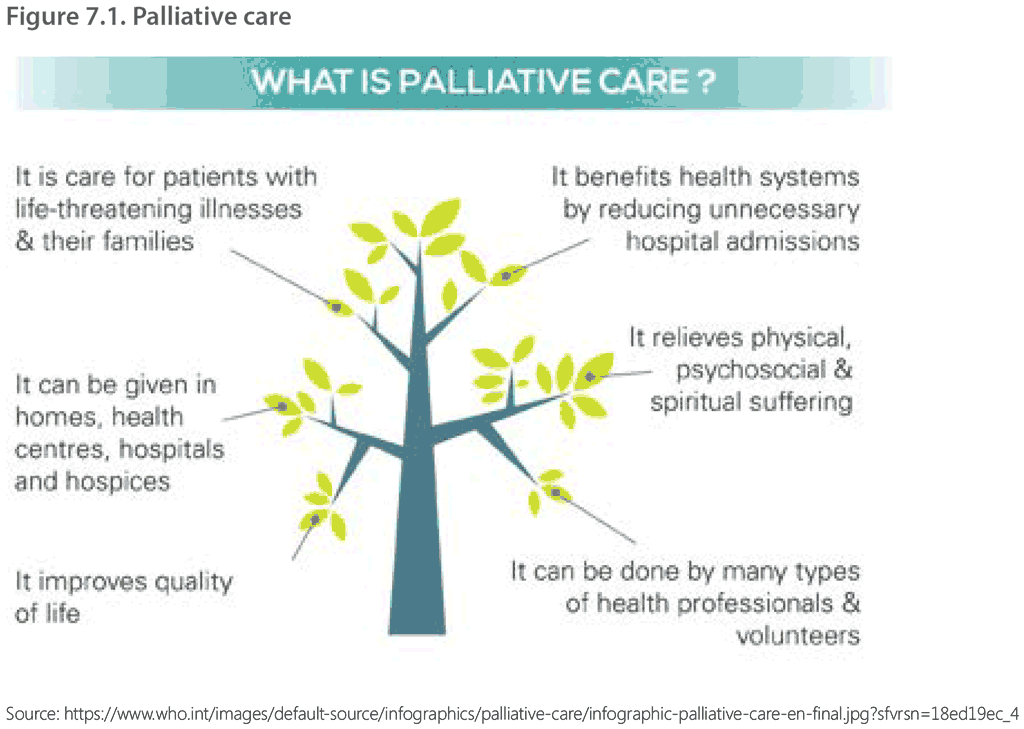Book traversal links for 7.3.1. Introduction
In 2014, World Health Assembly Resolution WHA67.19 called upon WHO and Member States to improve access to palliative care as a core component of health systems, with an emphasis on PHC and community- and home-based care (197). WHO is supporting integration of palliative care into all relevant global disease control and health system plans and is promoting improved access to palliative care for children, in collaboration with the United Nations Children’s Fund.

Palliative care is an approach that improves the quality of life of people (neonates, children, adolescents, young people, adults) and their families who are facing life-threatening illness (Figure 7.1). Palliative care prevents and relieves suffering through the early identification, correct assessment and treatment of pain and other problems, whether physical, psychosocial or spiritual. Addressing suffering involves taking care of issues beyond physical symptoms. Palliative care uses a team approach to support patients and their caregivers. This includes addressing practical needs and providing bereavement counselling. It offers a support system to help people live as actively as possible until death.
Palliative care is explicitly recognized under the human right to health. It should be provided through a person- and family-centred approach through integrated health services that pay special attention to the specific needs and preferences of individuals and caregivers. Palliative care is required for a wide range of diseases. In children, the greatest needs for palliative care are among those with HIV (29.6%); premature birth and birth trauma (17.7%); congenital malformations (16.2%); and injury, poisoning and external causes (16.0%). Of all children needing palliative care, 3.1% have TB (198).
 Feedback
Feedback